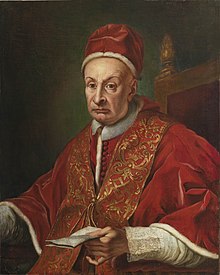
Servant of God (Latin : Servus Dei) is a title used in the Catholic Church to indicate that an individual is on the first step toward possible canonization as a saint.

Servant of God (Latin : Servus Dei) is a title used in the Catholic Church to indicate that an individual is on the first step toward possible canonization as a saint.
The expression Servant of God appears nine times in the Bible, the first five in the Old Testament, the last four in the New. The Hebrew Bible refers to Moses as "the servant of Elohim" (עֶֽבֶד הָאֱלֹהִ֛ים ‘eḇeḏ-hā’ĕlōhîm; 1 Chronicles 6:49 , 2 Chronicles 24:9 , Nehemiah 10:29 , and Daniel 9:11 ). Judges 2:8 and 2 Timothy 2:15 refer to Joshua as "the slave of Yahweh" (עֶ֣בֶד יְהוָ֑ה, ‘eḇeḏ Yahweh ).
The New Testament also describes Moses in this way in Revelation 15:3 (τοῦ δούλου τοῦ Θεοῦ, tou doulou tou Theou). Paul calls himself "a servant of God" in Titus 1:1 (δοῦλος Θεοῦ, doulos Theou), while James calls himself "a servant of God and the Lord Jesus Christ" (θεοῦ καὶ κυρίου Ἰησοῦ χριστοῦ δοῦλος, Theou kai Kyriou Iēsou Christou doulos) in James 1:1 . 1 Peter 2:16 describes "servants of God" (Θεοῦ δοῦλοι, Theou douloi) being free to act within the bounds of God's will. Following usage conventions established in the King James Bible, the word "servant" is never capitalized or used as a title of nobility. ("The servant is not greater than his lord.") [1]
Servant of God is an expression used for a member of the Catholic Church whose life and works are being investigated in consideration for recognition by the Pope and the Catholic Church as a saint in Heaven. [2] [3] The term Servant of God (Latin : Servus Dei) should not be confused with Servus Servorum Dei (Servant of the Servants of God), one of the titles of the Pope.
The term Servant of God is used in the first of the four steps in the canonization process. The next step is being declared venerable, upon a decree of heroism or martyrdom by the honored. That is followed by beatification, with the title of Blessed. After the confirmation of miracles resulting from the intercession of the honored, the final step is canonization, where the honored would receive the title of a saint. [4] [5] The process for canonization is under the jurisdiction of the Dicastery for the Causes of Saints.
Servant of God is not considered a canonical title in a strict sense by the Catholic Church (as for instance venerable or Blessed are), but only a technical term used in the process of canonization. Hence, any of the faithful can be named a Servant of God in a larger frame of meaning. [6] Public speeches about Servants of God are prohibited in Catholic churches as well as any acts that could mislead the faithful into thinking that the person will eventually be canonized. [7]